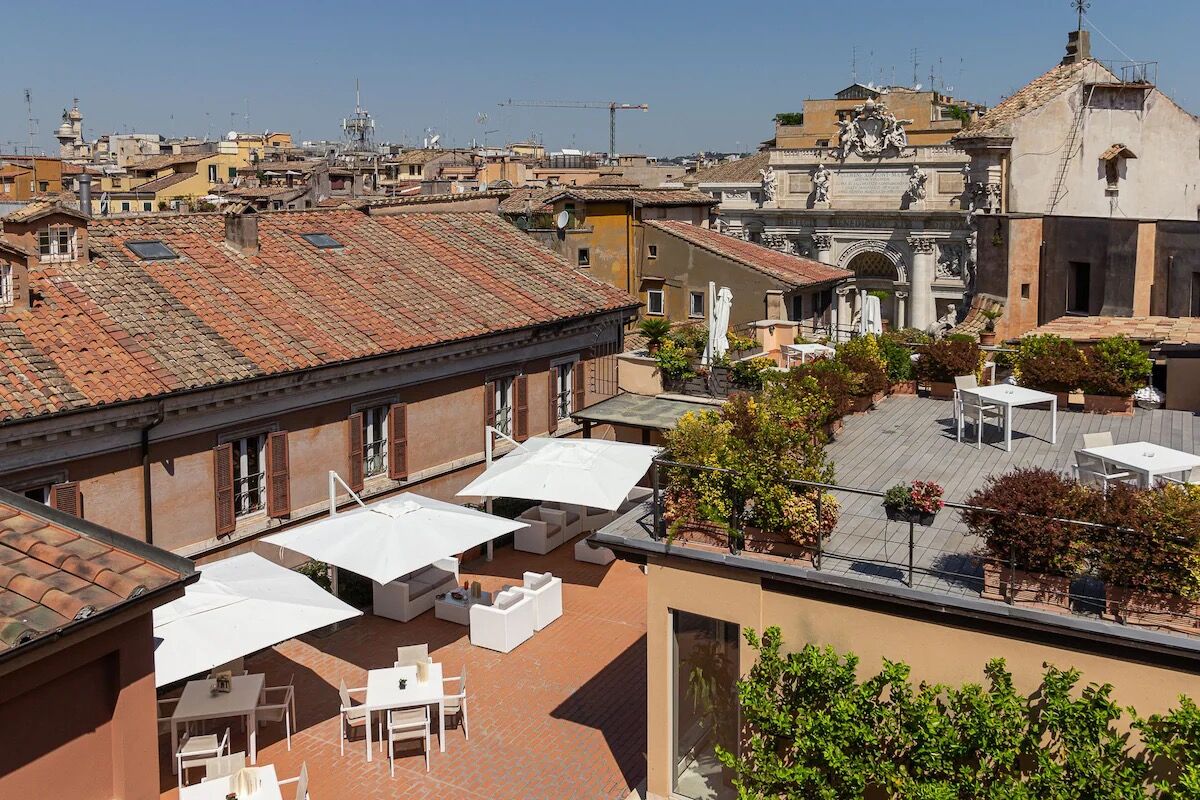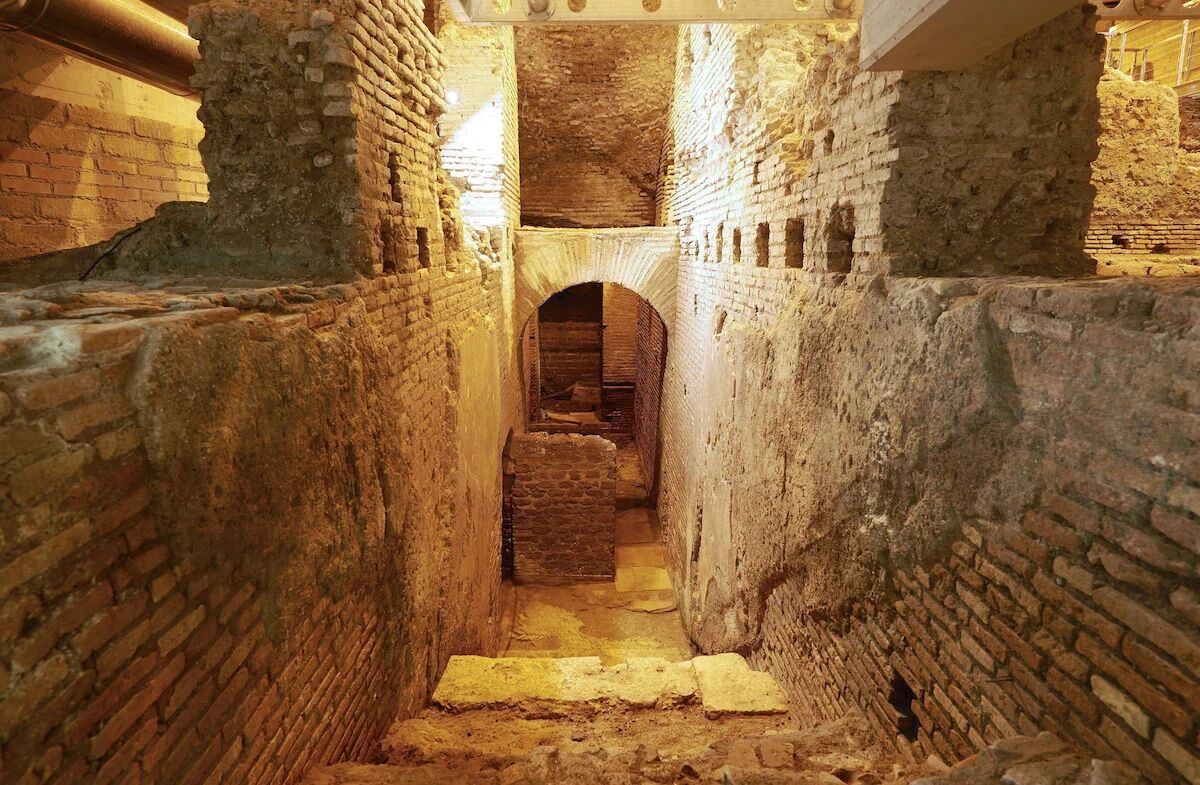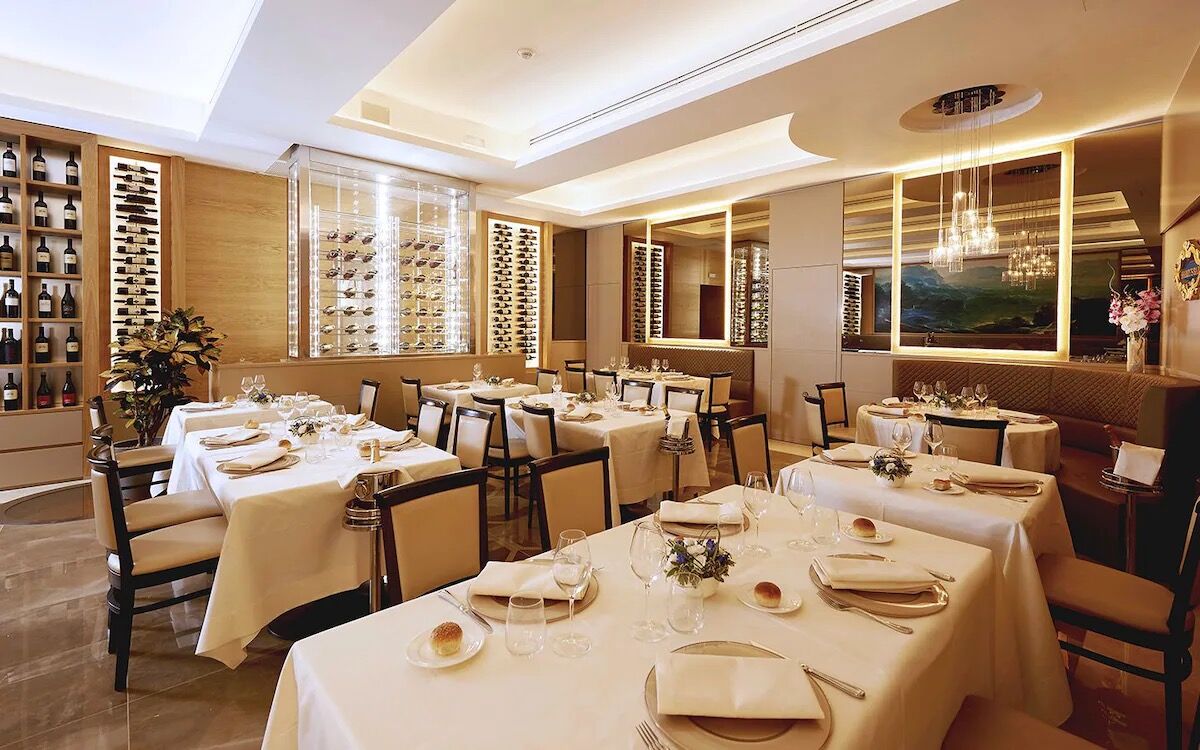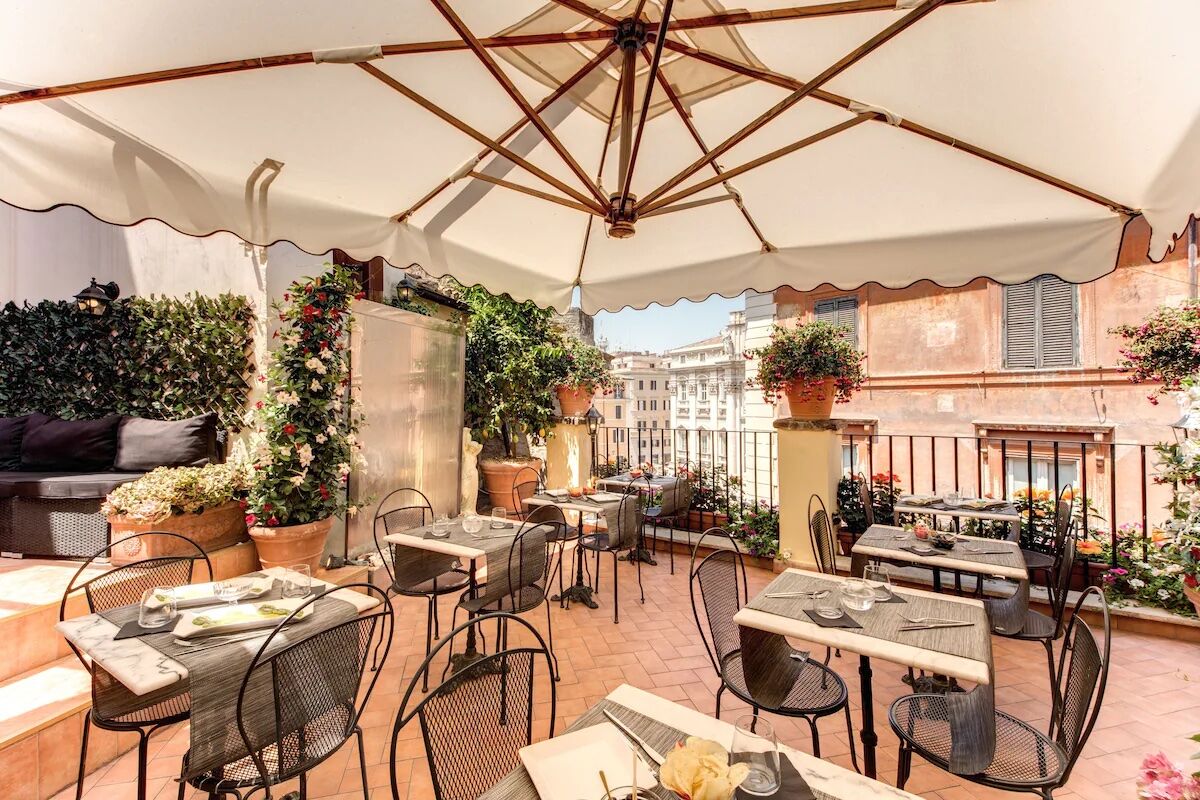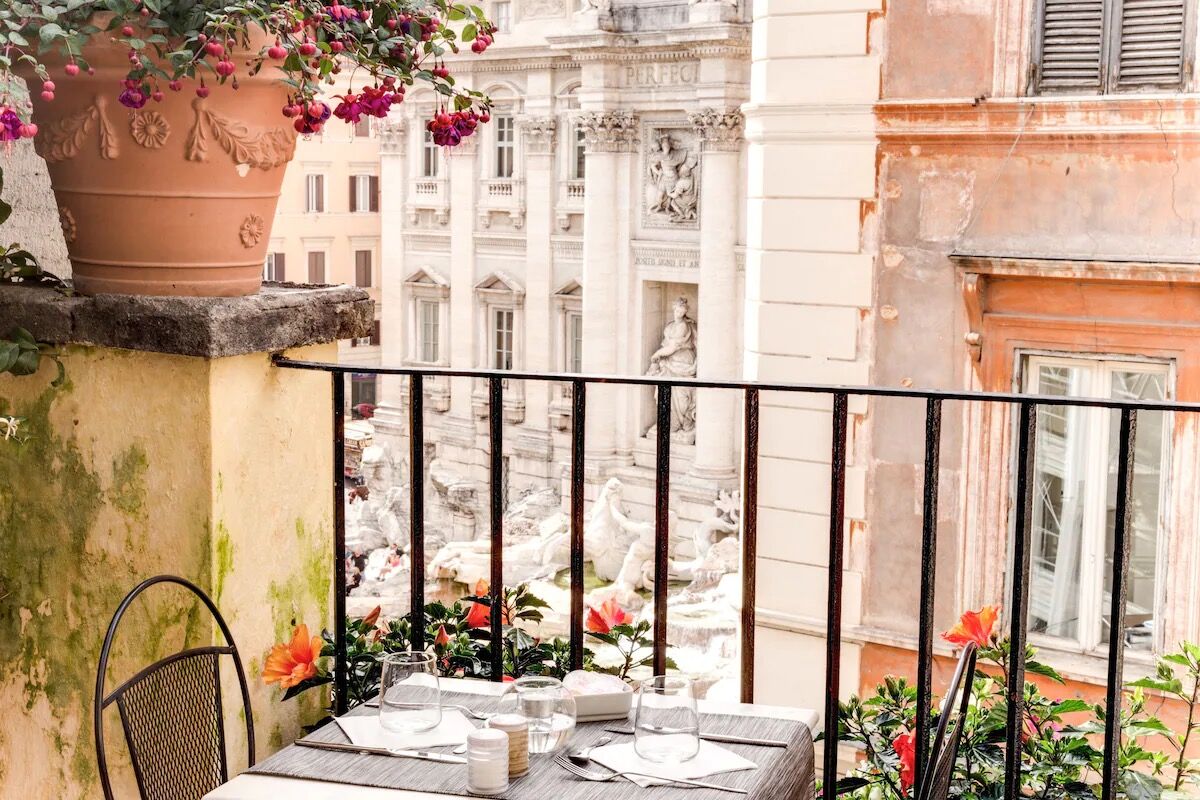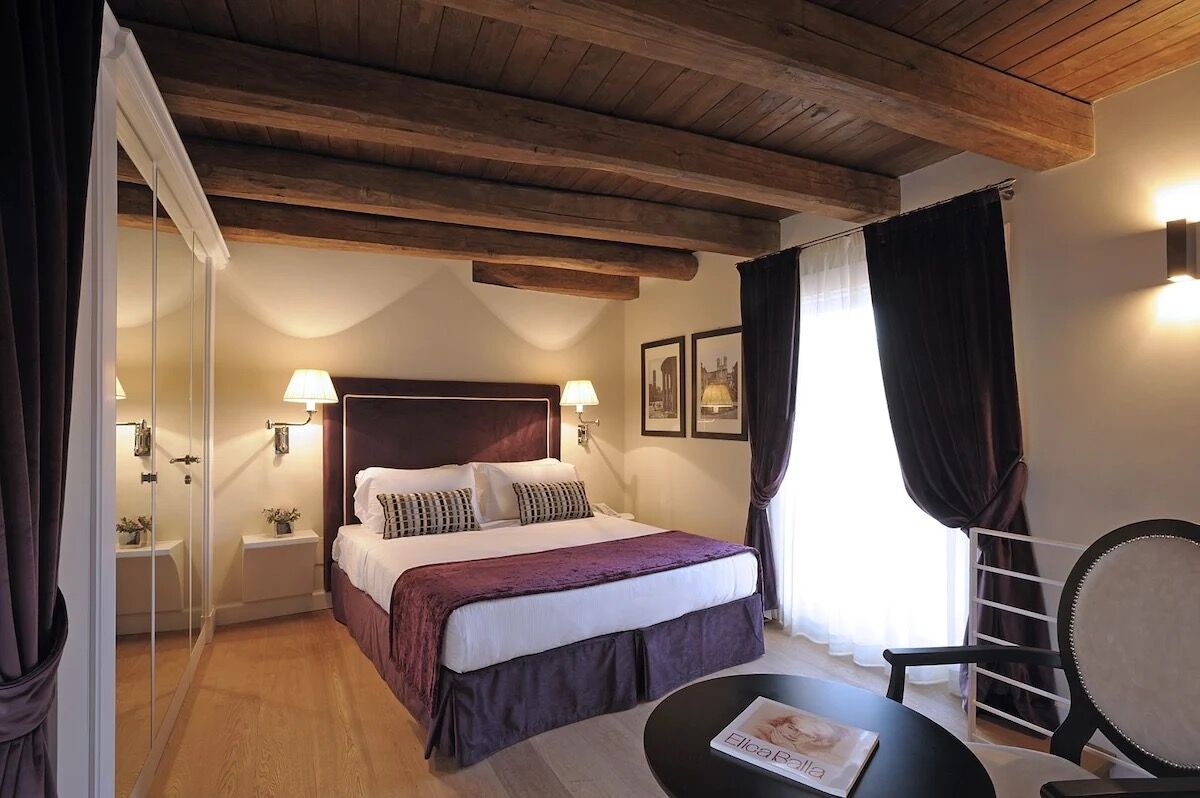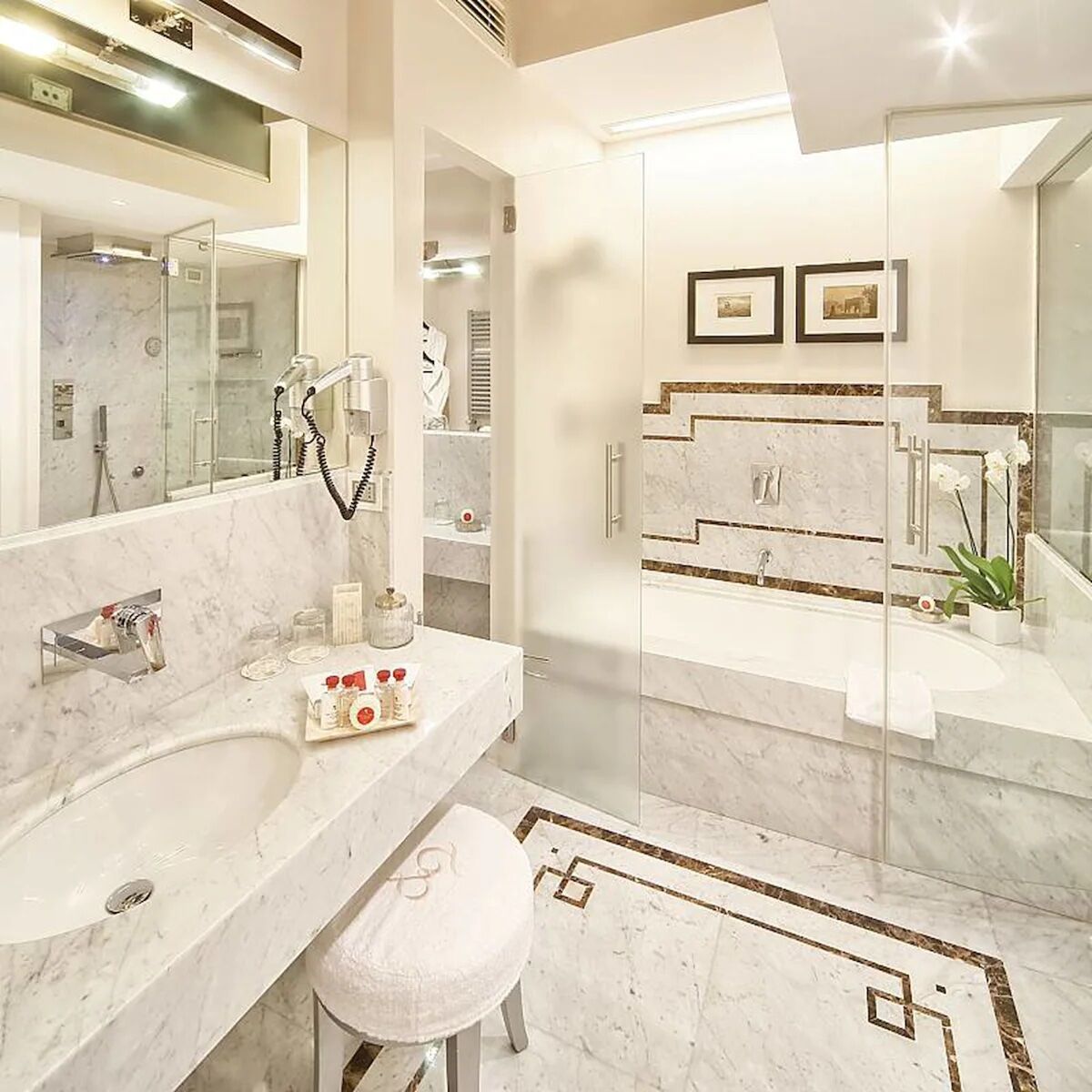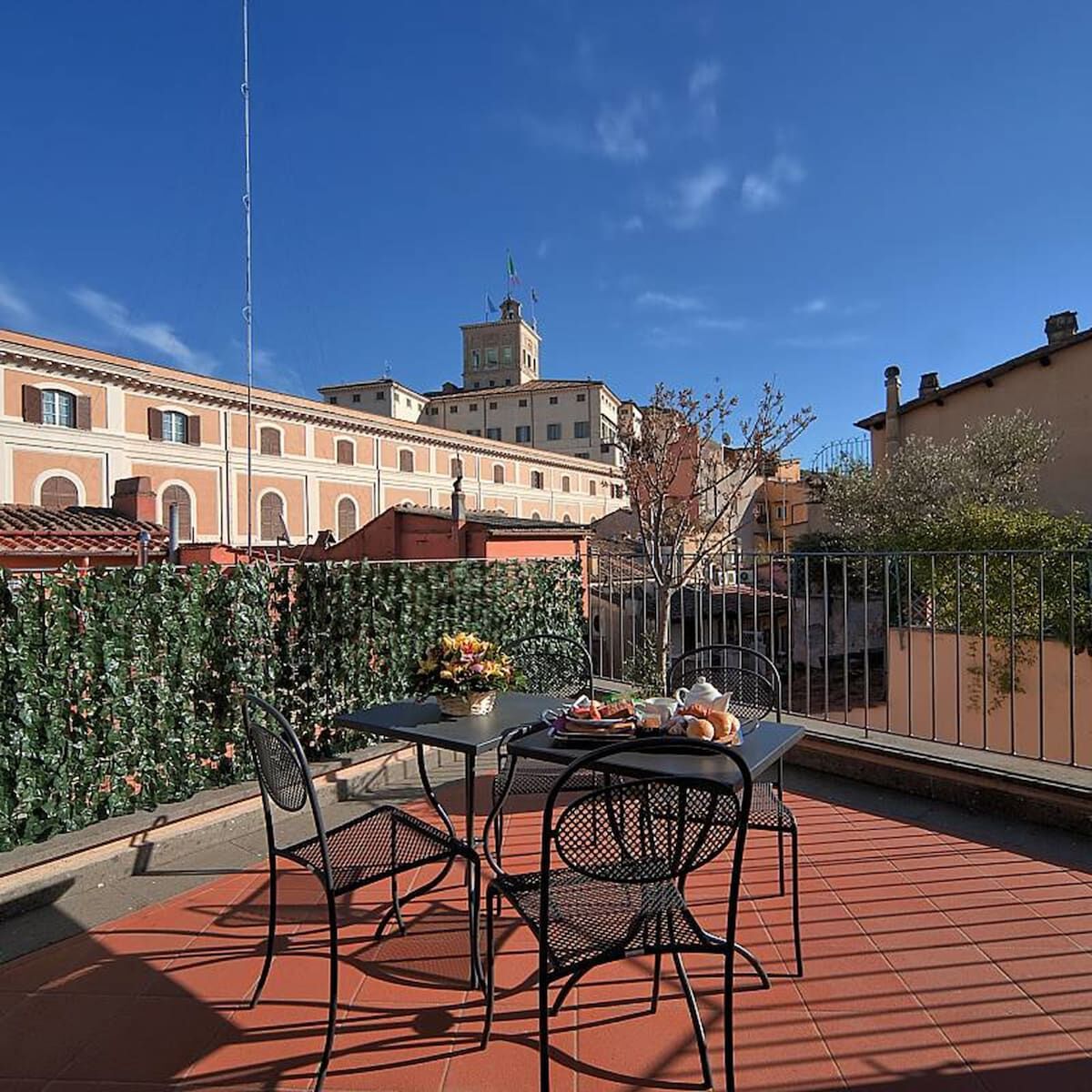One of Rome’s many nicknames is the City of Fountains for the several thousands water features that are dotted around the Italian capital. Some of these fountains are small, unremarkable, and utilitarian, used mostly to take a quick drink or wash your hands, while others are colossal and incredibly elaborate, designed and built to impress. The Trevi Fountain, known in Italian as Fontana di Trevi, is definitely the latter. The immense 18th-century structure is the most famous fountain in Rome, and possibly the world, and it’s one free Roman attractions that visitors would be remiss not to check out.
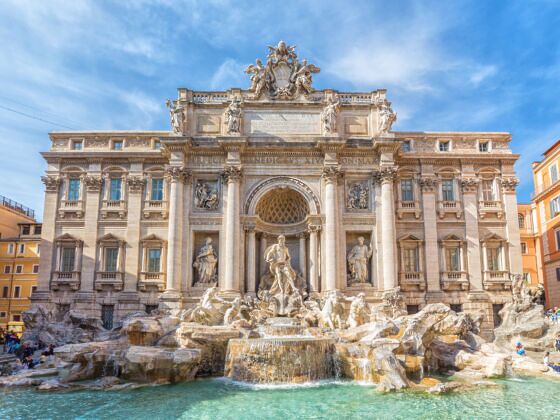
This 85-Foot-Tall Roman Fountain Is the Most Famous in the World - and You Can See It for Youself
- Where is the Trevi Fountain?
- How to get to the Trevi Fountain
- Who designed the Trevi Fountain, when, and why?
- Who are the characters represented on the Trevi Fountain?
- Why is the Trevi Fountain so famous?
- Why throw a coin in the Trevi Fountain?
- When does the Trevi Fountain light up at night?
- Is the Trevi Fountain the fountain of love?
- Five facts about the Trevi Fountain
- Where to stay in Rome to be near the Trevi Fountain
Where is the Trevi Fountain?
The Trevi Fountain is located in the Trevi neighborhood of Rome, where you’ll also find the magnificent Quirinal Palace, the National Gallery of Ancient Art located in the Barberini Palace, and another, less dramatic fountain, The Triton Fountain (Fontana del Tritone). The Trevi fountain is only one-mile (a 20-minute walk) from the Colosseum, Rome’s most visited attraction.
How to get to the Trevi Fountain
It is easy to get around Rome on foot, but if you’d rather use public transport, metro line A will take you directly to the Trevi Fountain (stop at the Barberini station). Metro line A is depicted in orange on the public transport map of Rome.
Who designed the Trevi Fountain, when was it built, and why?
In 1732, with his baroque masterpiece, sculptor and architect Nicola Salvi won a design competition for a beautiful Roman fountain launched by Pope Clement XII. He supervised the fountain’s construction until his death in 1751 when painter and architect Giuseppe Pannini took over the project until its completion in 1762.
Before the current Trevi Fountain, another water feature stood on the site but was demolished in the 17th century.
Who are the characters represented on the Trevi Fountain?
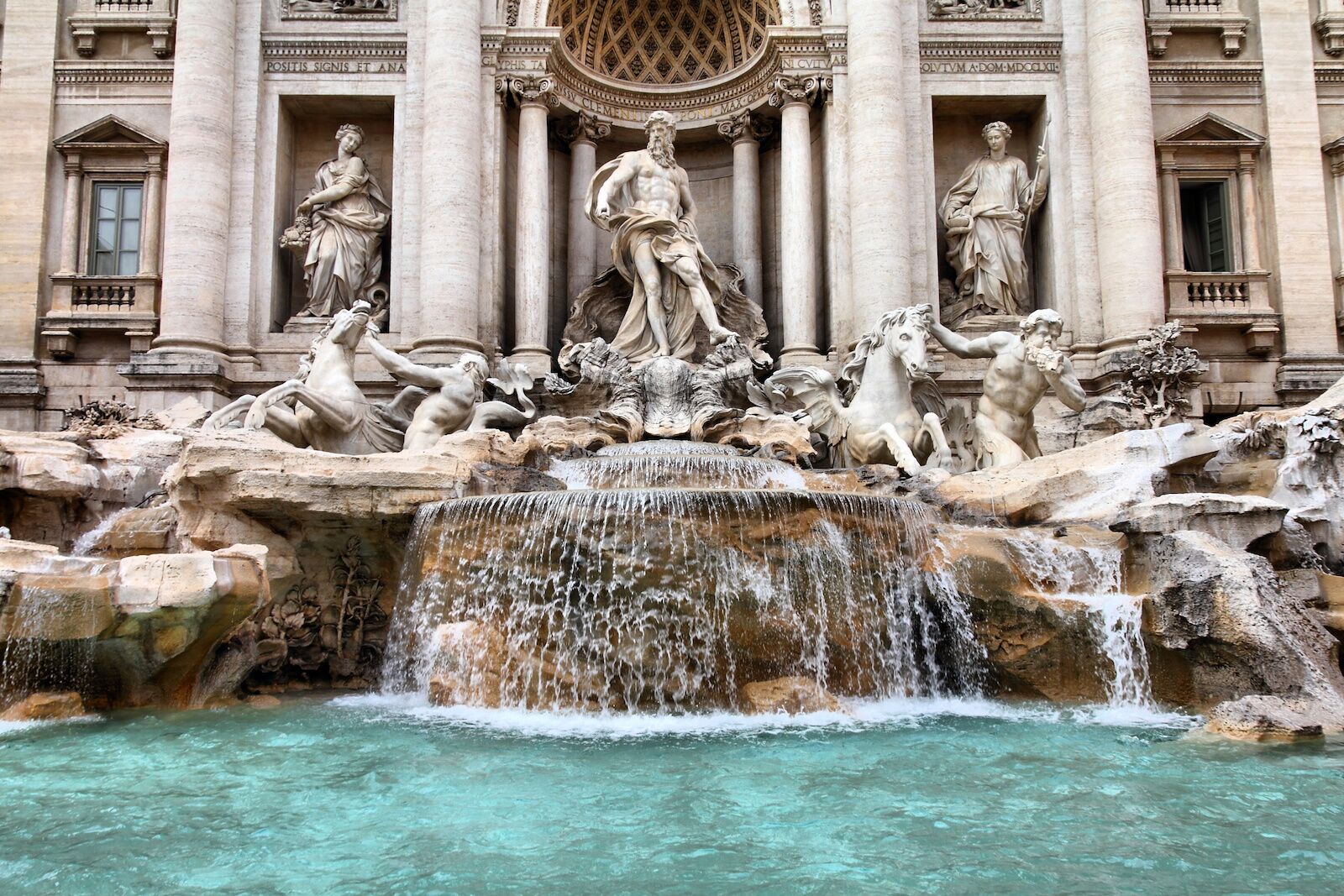
Photo: Tupungato/Shutterstock
The Trevi Fountain is on the rear facade of Palazzo Poli, a palace built in the 16th century and extended in the 17th and 18th centuries. The background of the fountain is a large arch, in the center of which stands Oceanus (Poseidon in Greek mythology), the god of the seas and oceans, on a shell-shaped chariot, riding down a cliff. The chariot is pulled by two winged horses held by tritons, half-man half-fish semi-gods.
On the right of Oceanus is Salus (Hygieia in Greek mythology), the goddess of health and hygiene; on his left is Abundantia (Euthenia in Greek Mythology), the goddess of abundance.
The scenes carved above each of the two goddesses refer to the legendary source of the water that flows from the Aqua Virgo aqueduct to the Trevi Fountain. On the right is the Virgin who points to the source of water; on the left is Agrippa who orders the construction of the famed aqueduct in 19 BC.
The Trevi Fountain is an allegory for the taming of the waters, which the Romans and their aqueducts are famous for.
Why is the Trevi Fountain so famous?
Besides being a spectacular example of an immense Baroque sculpture that showcases the incredible craftsmanship of its creator, the Trevi Fountain is also fed by the ancient aqueduct Aqua Virgo (Acqua Vergine in Italian) built in 19 BC and still in operation today.
Why throw a coin in the Trevi Fountain?
Legend has it that if you turn your back to the fountain and throw a coin above your shoulder into its basin, you will return to Rome. If you throw two coins, you’ll return and fall in love. If you throw three coins, you’ll return, fall in love, and get married.
The tradition of throwing coins in the fountain was made famous by the 1954 movie Three Coins in the Fountain.
When does the Trevi Fountain light up at night?
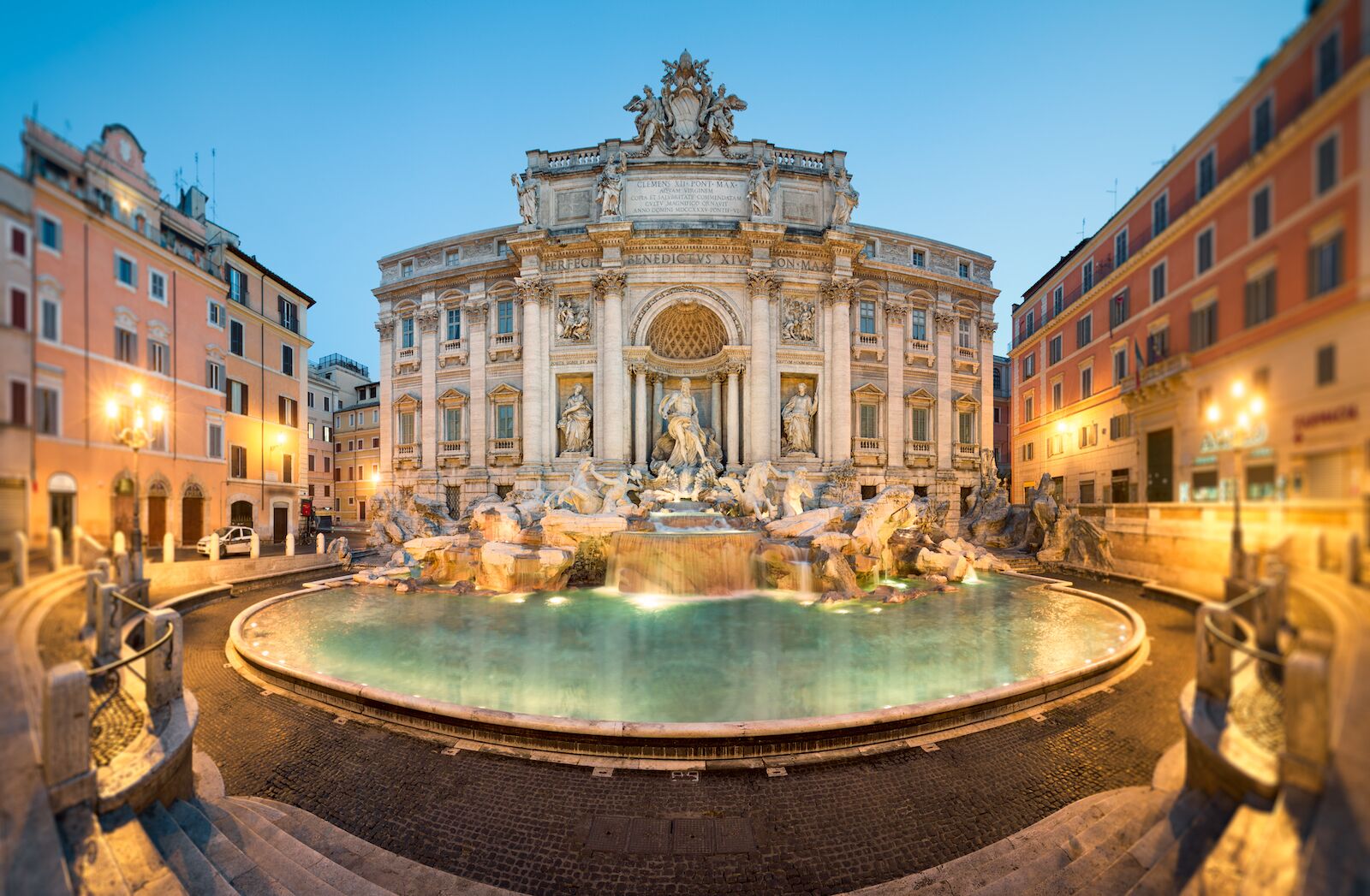
Photo: beboy/Shutterstock
The Trevi Fountain lights up every night when the sun goes down and the sky starts darkening.
Is the Trevi Fountain the fountain of love?
The Trevi Fountain is not the fountain of love, but on the right of the fountain, there is a rectangular basin with two spouts that is called the fountain of lovers (la fontanella degli innamorati in Italian). It is said that those who drink from it will remain together forever.
Five facts about the Trevi Fountain
- In 2016, visitors threw $1.5 million worth of coins in the Trevi Fountain. The money collected from the fountain is given to Catholic non-profit.
- It took 30 years to build the Trevi Fountain, from 1732 to 1762.
- The Trevi fountain is 85 feet high and 160 feet wide.
- The fountain is built against the rear of 16th-century Palazzo Poli
- The Trevi Fountain famously appears in Frederico Fellini’s 1960 film La Dolce Vita. In the scene, the characters of Marcello and Sylvia wade in the fountain. Today, it is forbidden to swim or even put your feet in the fountain.
- Visitors to the fountain cannot sit on the edge, or eat and drink by the fountain. Those who do risk being fined.
- The water of the Trevi Fountain is not safe to drink and trying to do so will get you in trouble with the local authorities.
Where to stay in Rome to be near the Trevi Fountain
We hope you love the spaces and stays we recommend! Just so you know, Matador may collect a small commission from the links on this page if you decide to book a stay.
Harry’s Bar Trevi Hotel & Restaurant
Harry’s Bar Trevi Hotel & Restaurant is a four-star property that is just a few hundred feet from the Trevi fountain. In fact, guests can see the famed fountain from the hotel’s terrace. The hotel has 13 rooms, 3 outbuildings and one apartment, all them decorated in a mix of classic and modern styles. The hotel’s unique touch is its underground archeological site that guests can actually visit. There is a large breakfast buffet every morning, and guests can enjoy fine dining at Harry’s Bar Trevi.
Relais Fontana di Trevi
The Relais Fontana di Trevi sits one-minute away from the fountain to provide guests with the best views of this famous attraction. The elegant guest rooms feature air conditioning, satellite TV, tea and coffee-making facilities, and private bathrooms with hairdryers. Guests can start their day with breakfast on the terrace overlooking the fountain, and explore nearby attractions like the Spanish Steps or the Pantheon which are just a few minutes away on foot.
Trevi Palace Luxury Inn
Located one-minute away from the fountain, the Trevi Palace Luxury Inn only has five classically decorated for an intimate stay. All the rooms have private, luxurious bathrooms, LCD satellite TVs, parquet floors, and free WiFi. Some rooms have a balcony and a hot tub.
